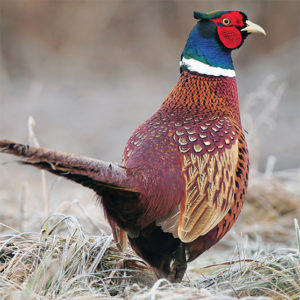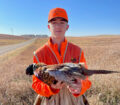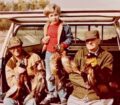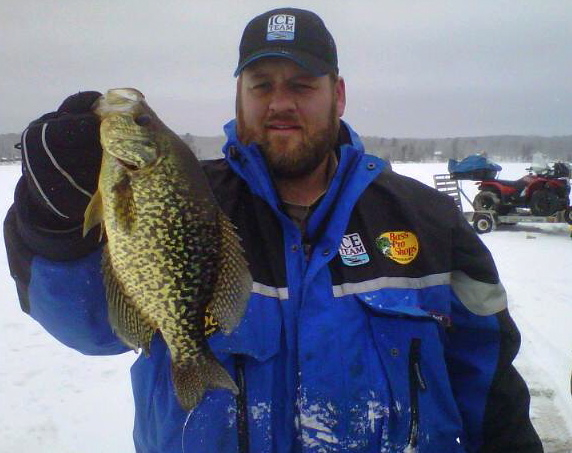By Steve Weisman
In the Hawkeye state, the last weekend in October is definitely A HAPPENING. It’s the pheasant opener, and the 2024 season begins a celebration, as it marks the end of the first 100 years – that’s one century – of pheasant hunting in the state of Iowa.
To commemorate this, the Iowa DNR and Pheasants Forever are partnering to celebrate Iowa’s 100-year tradition of pheasant hunting beginning this fall and running through October of 2025. Here is a little background of this game bird success.
Of course, it is well known that the ringneck pheasant came to the United States from China, and what a success story it has been. According to DNR historians, the first wild birds were released in Oregon’s Willamette Valley in 1881. Within a few years, birds were soon transplanted to other states.
As for Iowa, a windstorm in 1901 damaged the rearing pens of William Brenton, a game breeder near Cedar Falls. A total of 2,000 birds literally flew the coop and integrated into the nearby farmland rich with corn, oats and hay fields and pastureland. Over the years, wild pheasant eggs and wild birds were captured and transported to other regions of the state, and the first hunting season began in 1925 in 13 north central Iowa counties with an estimated 75,000 hunters taking to the field. The season was only a three-day season (Oct 20-22), with a bag limit of three roosters with half day hunting each day.
By 1935, 38 counties in northern Iowa had a pheasant season. Get this: part of the legal bag limit was one hen pheasant.
1936 was an important year with the Iowa State University/Conservation Commission establishing a September/October roadside survey to monitor pheasant populations. This became the forerunner of the modern August Roadside Survey used today.
By 1941, more than half of Iowa was open to hunting. Now get this one…the year was 1943 and pheasant numbers were exploding so much that a spring season was held from March 15-22 in 11 counties with a daily bag limit of six birds with one being a hen.
By 1951, all or parts of 92 counties were now open to pheasant hunting with a 25-day season with a three-rooster daily limit.
In 1962, the Conservation Commission based on research from Iowa State University revamped Sept/Oct pheasant survey into its current form – the annual August Roadside Survey.
Perfect timing: pheasant numbers explode
Most certainly, with the farming practices in those days, pheasant numbers soared in the early 1960s to the early 1970s. The highest pheasant harvest of 1.94 million roosters was in 1963. On that year’s 30-mile August Roadside Survey, the count numbers were incredible. The top area was northwest Iowa with 135.8 birds per route! North central was second at 110.3 and northeast was 98.5 birds per route.
In 1964, northwest was still excellent but dropped to 96.4 birds per rout and north central took the lead with 137.8 birds per route and northeast was next with 109.9.
Things shifted after that and by 1971 the northern areas had dropped significantly and were replaced by the central, east central and southwest had taken over the top numbers.
Iowa was a true destination for both resident and non-resident hunters, and in 1973, hunter numbers peaked at 308,000 hunters with 1.91 million roosters bagged.
Since that time, numbers of birds bagged have dropped and with it the number of hunters. Most certainly, it’s been about habitat shifts and compounded with difficult winter weather issues and abnormally wet springs.
Changes in farming practices have increased crop productivity, but they have also greatly reduced the grassy/weedy fence rows and grassy field edges, along with seed genetics that have pretty much eliminated weeds in the fields themselves.
At the same time, where there are good habitat tracts through state and federal lands, with the efforts of Pheasants Forever, Ducks Unlimited and Iowa Natural Heritage Foundation and county conservation boards, continued CRP and Continuous CRP practices, pheasant numbers remain stable, if not what the numbers were back in the “heyday” of Iowa’s pheasant hunting. In 2011, Iowa initiated the Iowa Habitat and Access Program (IHAP) that provides financial incentive payments to private landowners for creating wildlife habitat and in return, allowing hunters to hunt on their property. That has grown to be over 30,000 acres statewide.
Not the heyday…but
Now in its 100th year, pheasant hunting in Iowa, though it’s not the heyday, continues to be a strong and vibrant sport. People still come back for opener, maybe go to a hometown football game on Friday night, get together to share previous year stories and, perhaps, gather for an early morning breakfast! It truly is still a HAPPENING! In some hunting groups, there are three and four generation family members getting together for another year’s hunt!
As we look to the future, we must remember this. If we want this to continue, we must make sure that we do what we can to help our pheasants with their habitat. After all, it still comes down to this…habitat and weather. Enjoy this year’s Iowa Pheasant Opener!



















